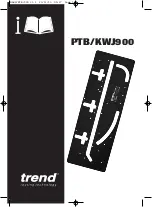
6RL SERIES OPERATION MANUAL
SECTION 7: REMOTE PROGRAMMING
Entire Contents Copyright
2018 by Adaptive Power Systems, Inc. (APS) • All Rights Reserved • No reproduction without written authorization from APS.
6RL Series Regenerative DC Load Operation Manual
Page 121 of 204
This means 52429 possible values for 0-100%. This is internally halved (bit 16 is reserved for
sign) and so the usable resolution results in 26214.
7.5.5
Translating Set values to Actual values
Real values have to be translated to their percent equivalent values before being
transmitted them to the unit. Values read from the unit are also in percent and must be
translated into real values in order to process them further. In all cases,0xCCCC
(hexadecimal) = 52428 (decimal) = 100% nominal value (U, I, P).
Translation is done by implementing these formulas into your software.
Per cent value to real value
Real value to per cent value
Real value =
Nominal device value * per cent value
52428
Example: The nominal voltage of your unit is 80 V and
the percent- aged actual voltage was read as 0x2454
= 9300. According to the formula above, the real
actual value will be (80 * 9300) / 52428 = 14,19 V.
Per cent value = 52428 * real value
Nominal device value
Example: the power set value shall be 3150 W, the
nominal power of your unit is 3500 W. According to the
formula above we get:
Power set value = (52428 * 3150) / 3500 = 47185 =
0xB851.
Note: All set values are not only limited by the unit’s nominal values, but can also be
limited by the adjustable “Limits” (where available). Values exceeding the minimum
or maximum of the adjusted range are rejected by the unit.
Note: When translating real values into percent values (decimal or hexadecimal), it is
often required to round up or down. We recommend to round naturally. Natural
rounding can result in a translation value, which is 1 higher than expected
7.6
USB Communication
After connecting the unit via USB cable and successful USB driver installation, the unit is
ready for access. The COM port, which is assigned to the new USB device (see Windows
device manager) does not need configuration. It is based upon a so-called CDC driver
(Communications Device Class), which is available for Windows XP and 7 (also Embedded)
and for other operating systems, too. This driver generates the COM port for simplicity and
can run data transmissions as fast as USB 2.0 can handle it. The typical serial settings are not
effective and are ignored.
7.6.1
USB driver installation
The USB driver for the rear panel USB device port type B is available for download from the
APS website or included with the unit on a USB memory stick. It installs as a signed driver for
virtual COM ports on 32 bit or 64 bit Windows operating systems Windows 7 or newer.
Содержание 6RL Series
Страница 203: ......
















































